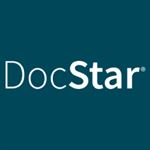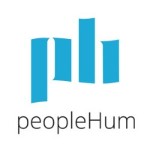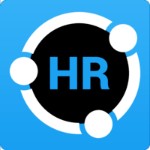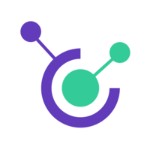Human resources (HR) are functions of human resources that are critical to the success of any organization. These functions are responsible for managing the people who work for an organization and ensuring that they are productive, engaged, and happy in their jobs. In this blog post, we will provide a comprehensive guide to HR functions, covering everything from recruitment and selection to training and development.
Explanation of HR Functions
HR functions refer to a set of activities and processes that are designed to manage an organization’s human capital. This includes activities such as: human resources management, resource information systems such as recruitment and selection, performance management, compensation and benefits, employee relations, training and development, and HR information systems.

Importance of HR Functions in Organizations
Effective HR functions are critical for attracting and retaining top talent, ensuring labor law compliance, and creating a positive and productive work environment. By managing employee relations, providing training and development opportunities, and tracking HR metrics and analytics, HR functions help organizations achieve their goals and drive business success.

Brief Overview of the Different HR Functions
There are several key HR professional functions that are critical to the success of any organization. These include:
Recruitment and selection: identifying job openings, sourcing candidates, and ultimately selecting the best candidate for the job.
Onboarding: welcoming new employees and providing them with the necessary training and resources to help them succeed in their new roles.
Performance management: setting performance goals and expectations for employees, monitoring their progress, providing feedback, and ultimately evaluating their performance.
Compensation and benefits: developing and administering the company’s compensation and benefits programs to attract and retain talent.
Employee relations: managing the relationships between the employer and employees, including handling conflicts and grievances and ensuring that the company is in compliance with labor laws.
Training and development: providing employees with the necessary skills and knowledge to perform their jobs effectively and to grow within the organization.
HR information systems: managing HR-related data, including employee records, payroll, and benefits information.
In the following sections, we will explore each of these HR functions in more detail and provide tips for implementing them effectively in your organization.

Recruitment and Selection
Recruitment and selection are critical HR functions that involve identifying, attracting, and hiring the best candidates for job openings within an organization. In this section, we will discuss the importance of effective recruitment and selection, the steps involved in the recruitment and selection process, common challenges that organizations face in this area, and software tools that can help.
Importance of Effective Recruitment and Selection
Effective recruitment and selection are essential for ensuring that an organization has the talent it needs to achieve its goals. The right employees can make a significant impact on an organization’s productivity, efficiency occupational safety, and culture. Conversely, hiring the wrong employees can lead to costly turnover, decreased morale, and negative impacts on the organization’s bottom line.
By having a well-planned and executed recruitment and selection process, organizations can increase the likelihood of hiring the best candidates for their job openings. This, in turn, can lead to better employee performance, higher retention rates, and a more engaged and motivated workforce.
Steps Involved in Recruitment and Selection Process
The recruitment and selection process involves several steps, including:
Job analysis: This involves defining the job requirements, including the necessary skills, knowledge, and experience required for the position.
Sourcing candidates: This involves identifying potential candidates through job postings, employee referrals, social media, and other channels.
Screening candidates: This involves reviewing resumes, conducting phone screens, and administering assessments to determine which candidates are the best fit for the job.
Interviewing candidates: This involves conducting interviews to assess the candidate’s qualifications, experience, and fit with the organization’s culture.
Selecting candidates: This involves making a job offer to the best candidate and negotiating compensation and benefits.
Common Challenges in Recruitment and Selection
Recruitment and selection can be a challenging process, and organizations often face common challenges in this area. Some of the most common challenges include:
Attracting qualified candidates: In a competitive job market, it can be challenging to attract qualified candidates who have the necessary skills and experience for the job.
Time constraints: The recruitment and selection process can be time-consuming, and organizations may struggle to balance the need to fill job openings quickly with the need to find the best candidates.
Bias and discrimination: Hiring decisions can be influenced by conscious or unconscious biases, leading to discrimination against certain groups of candidates.
Candidate experience: The recruitment and selection process can be a reflection of an organization’s culture and values, and a poor candidate experience can damage the organization’s reputation.
Software Tools for Recruitment and Selection
Technology can be a powerful tool for improving recruitment and selection processes. One software tool that can be used for sourcing candidates is LinkedIn Recruiter. LinkedIn Recruiter allows recruiters to search for potential candidates based on specific keywords, their job descriptions, titles, locations, and other criteria. It also provides insights into a candidate’s work experience, education, and professional skills.
Another software tool that can be used for candidate screening is Criteria Corp’s HireSelect. HireSelect provides organizations with pre-employment assessments to help determine a candidate’s job-related skills, cognitive abilities, and personality traits. It also offers analytics to track hiring success and identify areas for improvement.
Incorporating software tools in the recruitment and selection process can optimize and enhance the talent acquisition process. These tools can simplify the hiring process by increasing efficiency, while also improving the quality of the hires. This leads to attracting top talent with fewer resources and in a shorter time frame.

Onboarding
Onboarding is the process of integrating new employees into an organization and providing them with the tools, human resources, and knowledge they need to be successful in their new roles. In this section, we will discuss the definition and importance of onboarding, the components of a successful onboarding program, the benefits of effective onboarding, and software tools that can help.
Definition and Importance of Onboarding
Onboarding is a critical HR function that plays a vital role in setting up new and existing employees both for success. Effective onboarding helps new hires feel welcomed, engaged, and confident in their abilities, leading to increased job satisfaction, productivity, and retention rates.
A comprehensive onboarding program should cover a range of topics, including the organization’s culture and values, job-specific training, orientation to company policies and procedures, and introductions to key team members.
Components of a Successful Onboarding Program
A successful onboarding program should include several key components, such as:
Pre-boarding activities: This involves communicating with new hires before their start date to provide them with relevant information and resources to help them prepare for their new role.
Job-specific training: This involves providing new hires with training and resources specific to their job role, including information on job duties, expectations, and performance goals.
Cultural orientation: This involves introducing new hires to the organization’s culture, values, and mission to help them understand how their role fits into the broader picture.
Feedback and support: This involves providing ongoing feedback and support to new hires to help them adjust to their new role and overcome any challenges they may face.
Benefits of Effective Onboarding
Effective onboarding can have numerous benefits for both the organization and the new hire, such as:
Increased retention rates: Effective onboarding can help new hires feel valued and engaged, leading to higher retention rates and lower turnover.
Improved job performance: Providing new hires with the resources and support they need to be successful in their new role can lead to improved job performance and productivity.
Enhanced employee engagement: Effective onboarding can help new hires feel connected to the organization’s culture, values, and mission, leading to increased engagement and commitment.
Positive employer brand: A well-designed onboarding program can help establish a positive employer brand, leading to increased interest from top talent.
Software Tools for Onboarding
Technology can be a valuable asset when it comes to onboarding new hires. One software tool that can be used for onboarding is Enboarder. Enboarder provides organizations with a platform to create personalized onboarding experiences for new hires. It includes features such as task automation, interactive checklists, and feedback tools to help streamline the onboarding process and provide ongoing support to new hires.
Another software tool that can be used for onboarding is Workday Onboarding. Workday Onboarding provides organizations with a cloud-based platform for automating onboarding processes, such as background checks, employment verification, and new hire paperwork. It also includes features such as task management and reporting to help organizations track and analyze the success of their onboarding programs.
The integration of software tools into an organization’s onboarding process can lead to a more efficient and successful process, ultimately resulting in higher retention rates, improved job performance, and increased employee engagement. These tools can simplify the onboarding experience, making it more effective and engaging for new hires, which helps to build strong relationships from the very start.

Performance Management
Performance management is the process of setting expectations, assessing progress, and providing feedback to employees to improve their job performance. In this section, we will discuss the definition and importance of performance management, the steps involved in the performance management process, challenges in performance management, and software tools that can help.
Definition and Importance of Performance Management
Performance management is a critical HR function that helps organizations ensure that their employees are meeting expectations and contributing to the organization’s success. By setting clear goals and providing ongoing feedback, organizations can help employees improve their job performance and achieve their full potential.
Effective performance management can lead to numerous benefits, including improved employee engagement, increased employee productivity, employer employee relationships and higher retention rates.
Steps Involved in Performance Management Process
The performance management process typically involves several steps, such as:
Setting goals: This involves setting clear, specific, and measurable goals for each employee.
Monitoring progress: This involves tracking each employee’s progress towards their goals and providing ongoing feedback to help them stay on track.
Evaluating performance: This involves assessing each employee’s performance based on their progress towards their goals, as well as their skills, knowledge, and behaviors.
Providing feedback: This involves providing constructive feedback to employees to help them improve their job performance and achieve their goals.
Developing action plans: This involves developing action plans to help employees address any performance issues and improve their skills and knowledge.
Challenges in Performance Management and How to Overcome Them
Performance management can be a complex and challenging process, and organizations may face several challenges when implementing it. Some of the most common challenges include:
Lack of clarity: If employees are not clear on what is expected of them, they may struggle to meet performance expectations. To overcome this challenge, organizations should ensure that goals are specific, measurable, and attainable.
Subjectivity: Evaluating employee performance can be subjective and influenced by personal biases. To overcome this challenge, organizations should establish objective criteria for evaluating performance and provide training to HR managers on how to assess performance objectively.
Time constraints: Performance management can be time-consuming, and managers may struggle to balance the need to provide feedback with their other job responsibilities. To overcome this challenge, organizations can use software tools to streamline the performance management process and make it more efficient.
Software Tools for Performance Management
Technology can be a powerful tool for improving your performance management system and processes. One software tool that can be used for setting and tracking goals is OKR Software by Profit.co. OKR Software provides organizations with a platform to set clear, measurable, and attainable goals for each employee. It also includes features such as progress tracking and analytics to help managers assess each employee’s progress towards their goals.
Another software tool that can be used for performance evaluation and feedback is 15Five. 15Five provides organizations with a platform to facilitate ongoing communication and feedback between managers and employees. It includes features such as check-ins, one-on-one meetings, and performance reviews to help managers assess each employee’s performance and provide ongoing feedback.
By incorporating software tools into the performance management process, organizations can improve the overall effectiveness of this critical function. These tools can streamline the process, making it easier to track employee performance, provide feedback, and set goals, leading to increased engagement, higher productivity, and improved job performance. With software tools, managers can provide more accurate and timely feedback, leading to better communication and stronger relationships with employees.

Compensation and Benefits
Compensation and benefits refer to the total package of rewards and incentives that organizations offer to their employees in exchange for their work. In this section, we will discuss the explanation of compensation and benefits, the types of compensation and benefits programs, the importance of fair and competitive compensation and benefits, and software tools that can help.
Explanation of Compensation and Benefits
Compensation refers to the monetary and non-monetary rewards that employees receive in exchange for their work. This includes base salary, bonuses, commissions, and other incentives such as stock options or profit-sharing plans.
Benefits refer to the non-monetary rewards that employees receive as part of their employment, such as health insurance, retirement plans, vacation time, and other perks such as gym memberships or tuition reimbursement.
Types of Compensation and Benefits Programs
Organizations can offer several types of compensation and benefits programs, such as:
Base salary: This is the fixed amount of money that an employee is paid for their work.
Bonuses: This is a one-time payment given to employees for achieving certain goals or milestones.
Commission: This is a percentage of sales that an employee earns in addition to their base salary.
Health insurance: This provides employees with coverage for medical expenses.
Retirement plans: This includes programs such as 401(k) plans or pension plans that help employees save for retirement.
Paid time off: This includes vacation time, sick leave, and personal days that employees can use to take time off from work.
Other perks: This includes non-monetary benefits such as gym memberships, flexible work schedules, or tuition reimbursement.
Importance of Fair and Competitive Compensation and Benefits
Offering fair and competitive compensation and benefits is crucial for attracting and retaining top talent. When employees feel that they are being fairly compensated for their work, they are more likely to feel engaged, motivated, and committed to the organization.
Additionally, offering competitive compensation and benefits encourage employees can help organizations stand out in a competitive job market and attract top talent.
Software Tools for Compensation and Benefits
Technology can be a valuable asset when it comes to managing compensation and benefits programs. One software tool that can be used for compensation management is PayScale. PayScale provides organizations with a platform to analyze and compare compensation data for different job roles and industries. It also includes features such as salary reports and market data to help organizations ensure that their compensation programs are fair and competitive.
Another software tool that can be used for benefits management is Zenefits. Zenefits provides organizations with a platform to manage employee benefits programs, including their employee health, insurance, retirement plans, and other perks. It includes features such as automated enrollment, compliance tracking, and reporting to help organizations streamline their benefits administration processes.
By utilizing software tools, organizations can streamline their compensation and benefits programs, ensuring they are fair, competitive, and aligned with the company’s overall HR strategy. These tools can aid in tracking and managing employee compensation and benefits, while also ensuring they remain competitive and compliant with industry standards. Additionally, these tools can help organizations align their compensation and benefits programs with their HR strategy, leading to increased employee engagement, job satisfaction, and retention rates.

Employee Relations
Employee relations refer to the ways in which organizations interact with and manage their employees. In this section, we will discuss the definition and importance of employee relations, common employee relations issues, strategies for managing employee relations effectively, and software tools that can help.
Definition and Importance of Employee Relations
Employee relations is a critical HR function that focuses on building positive relationships between employees and the organization. Effective employee relations help create a positive workplace environment, a supportive work environment, improve job satisfaction, and maintain positive relationships that increase employee engagement and retention.
Employee relations include a range of activities, such as communication, conflict resolution, performance management, and employee engagement.
Common Employee Relations Issues
Organizations may face several common employee and labor relations’ issues, such as:
Communication breakdowns: When there is a lack of communication between employees and management, it can lead to misunderstandings and conflict.
Workplace harassment: Harassment or discrimination in the workplace can create a hostile work environment and damage employee morale.
Performance issues: Poor job performance can lead to frustration and conflict between employees and management.
Employee turnover: High turnover rates can be a sign of deeper employee relations issues, such as low job satisfaction or poor management.
Strategies for Managing Employee Relations Effectively
Effective employee relations require a proactive and strategic approach. Some strategies for managing employee relations effectively include:
Building a positive workplace culture: Organizations should focus on creating a supportive work environment that values employee well-being and engagement.
Providing ongoing communication and feedback: Regular communication and feedback can help build trust and prevent misunderstandings.
Addressing conflicts proactively: Conflict is inevitable in any workplace, but organizations should have a plan in place for addressing conflicts in a constructive and timely manner.
Offering training and development opportunities: Providing employees with training and development opportunities can help improve job satisfaction and build employee loyalty.
Software Tools for Employee Relations
Technology can be a powerful tool for improving employee employee and labor relations,. One software tool that can be used for communication and feedback is TINYpulse. TINYpulse provides organizations with a platform to collect employee feedback and track employee engagement. It includes features such as surveys, pulse polls, and anonymous feedback tools to help organizations identify employee relations issues and take corrective action.
Another software tool that can be used for conflict resolution is Mediate.com. Mediate.com provides organizations with a platform to facilitate online mediation and conflict resolution between employees. It includes features such as video conferencing, secure document sharing, and case management to help organizations manage conflicts efficiently and effectively.
By utilizing software tools, organizations can streamline their compensation and benefits programs, ensuring they are fair, competitive, and aligned with the company’s overall HR strategy. These tools can aid in tracking and managing employee compensation and benefits, while also ensuring they remain competitive and compliant with industry standards. Additionally, these tools can help organizations align their compensation and benefits programs with their HR strategy, leading to increased employee engagement, job satisfaction, and retention rates.

Training and Development
Training and development refer to the processes through which organizations enhance their employees’ skills, knowledge, and abilities. In this section, we will discuss the definition and importance of training and development, types of training and development programs, benefits of effective training and development, and software tools that can help.
Definition and Importance of Training and Development
Training and development are critical HR functions that help organizations ensure that their employees have the skills and knowledge they need to perform their jobs effectively. Effective training and development programs can lead to numerous benefits, such as increased employee engagement, improved job performance, and higher retention rates.
Training and development programs can take many forms, including formal classroom training, on-the-job training, coaching and mentoring, e-learning, and workshops.
Types of Training and Development Programs
Organizations can offer several types of training and development programs, such as:
New hire orientation: This provides new employees with an overview of the organization’s policies, culture, and expectations.
Skills training: This provides employees with the skills they need to perform their job duties effectively, such as technical skills or soft skills.
Leadership development: This provides employees with the skills they need to become effective leaders and managers.
Compliance training: This provides employees with the knowledge they need to comply with legal and regulatory requirements.
Diversity and inclusion training: This provides employees with the knowledge and skills they need to work effectively with colleagues from diverse backgrounds.
Benefits of Effective Training and Development
Effective training and development programs can lead to numerous benefits for organizations, by training employees, such as:
Improved employee engagement: Employees who feel that their organization is investing in their professional development are more likely to feel engaged and committed to their jobs.
Increased productivity: Employees who have the skills and knowledge they need to perform their jobs effectively are more productive and efficient.
Higher retention rates: Organizations that offer effective training and development programs are more likely to retain their top talent.
Improved organizational performance: Effective training and development programs can help organizations improve overall job performance and achieve their strategic goals.
Software Tools for Training and Development
Technology can be a valuable asset when it comes to managing training and development programs. One software tool that can be used for e-learning and training management is Cornerstone OnDemand. Cornerstone OnDemand provides organizations with a platform to deliver e-learning courses and manage their training programs. It includes features such as course creation, learning management, and analytics to help organizations ensure that their employees have the skills and knowledge they need to perform their jobs effectively.
Another software tool that can be used for coaching and mentoring is MentorcliQ. MentorcliQ provides organizations with a platform to facilitate coaching and mentoring programs between employees. It includes features such as program management, progress tracking, and reporting to help organizations ensure that their coaching and mentoring programs are effective and efficient.
The integration of software tools into an organization’s training and development programs can help to ensure that they are effective, efficient, and aligned with the company’s overall HR strategy. These tools can provide managers and employees with the necessary resources to develop skills and knowledge, while also tracking progress and providing feedback. With software tools, organizations can easily align their training and development programs with their overall HR strategy, leading to a more skilled and engaged workforce.

HR Information Systems
HR information systems (HRIS) refer to software applications that organizations use to manage their HR functions and store employee data. In this section, we will discuss the explanation of HR information systems, the importance of accurate and reliable HR data, common HR information systems, and their features.
Explanation of HR Information Systems
HR information systems (HRIS) are software applications that organizations use to manage their HR functions and employee data. HRIS typically includes modules for managing employee information, benefits administration, payroll processing, performance management, and compliance tracking.
HRIS can help organizations streamline their HR processes, improve data accuracy and reliability, and increase overall HR efficiency.
Importance of Accurate and Reliable HR Data
Accurate and reliable HR data is crucial for organizations to make informed decisions about their workforce. for HR professionals, data is used to track employee performance, monitor compliance, and identify areas for improvement.
Without accurate and reliable HR data, organizations may make poor decisions that can lead to costly mistakes, such as noncompliance penalties, poor job performance, and high turnover rates.
Common HR Information Systems and Their Features
There are several common HR information systems, including:
BambooHR: This is a cloud-based HRIS that includes modules for employee information management, benefits administration, performance management, and applicant tracking. It includes features such as time-off tracking, reporting, and analytics to help organizations manage their HR processes more efficiently.
ADP Workforce Now: This is an all-in-one HRIS that includes modules for payroll processing, benefits administration, time and attendance tracking, and performance management. It includes features such as mobile access, compliance tracking, and HR analytics to help organizations manage their HR functions more effectively.
SAP SuccessFactors: This is a cloud-based HRIS that includes modules for talent management, learning management, performance and goals management, and HR analytics. It includes features such as mobile access, employee self-service, and collaboration tools to help organizations manage their HR functions more efficiently.
Overall, HR information systems can help organizations manage their HR functions and employee data more efficiently and effectively. By leveraging software tools and best practices, organizations can ensure that their HR data is accurate and reliable, and use that data to make informed decisions about their workforce.

Best Practices for HR Functions
HR functions are critical for organizations to attract, retain, and develop their workforce. In this section, we will discuss common mistakes to avoid in HR functions, strategies for improving the effectiveness of HR departments and functions, and tips for developing a comprehensive HR strategy.
Common Mistakes to Avoid in HR Functions
Some common mistakes to avoid in HR functions include:
Failing to align HR strategy with overall business strategy
Failing to measure HR effectiveness and impact
Neglecting employee engagement and satisfaction
Failing to communicate HR policies and practices effectively
Ignoring compliance requirements and legal obligations
Strategies for Improving the Effectiveness of HR Functions
Some strategies for improving the effectiveness of HR functions include:
Aligning HR strategy with overall business strategy to ensure that HR goals are aligned with organizational goals.
Measuring HR effectiveness and impact to ensure that HR functions are meeting organizational goals and contributing to overall organizational performance.
Focusing on employee engagement and satisfaction to ensure that employees are motivated and committed to their jobs.
Communicating HR policies and practices effectively to ensure that employees understand their rights and responsibilities.
Ensuring compliance with legal requirements and regulatory obligations to avoid penalties and legal issues.
Tips for Developing a Comprehensive HR Strategy
Developing a comprehensive HR strategy can help organizations align their HR functions with their overall organizational goals. Some tips for developing a comprehensive HR strategy include:
Assessing organizational needs and goals to ensure that HR strategy is aligned with overall organizational strategy.
Defining key performance indicators (KPIs) and metrics to measure HR effectiveness and impact.
Developing an employee engagement and satisfaction strategy to improve employee motivation and retention.
Establishing clear policies and procedures to ensure compliance with legal requirements and regulatory obligations.
Leveraging software tools to manage HR functions more efficiently and effectively.
HR functions play a critical role in organizations’ success, and effective HR strategies require careful planning, execution, and evaluation. By avoiding common mistakes, focusing on employee engagement and satisfaction, and developing a comprehensive HR strategy, organizations can ensure that their HR functions are aligned with their overall organizational goals and contribute to overall organizational performance.

HR Metrics and Analytics
HR metrics and analytics refer to the measurement and analysis of HR data to track organizational performance, identify areas for improvement, and make informed decisions about workforce and other human resource planning and management. In this section, we will discuss the explanation of HR metrics and analytics, the importance of tracking and measuring HR metrics, examples of HR metrics, and how to use them to improve HR functions.
Explanation of HR Metrics and Analytics
HR metrics and analytics refer to the measurement and analysis of HR data to track organizational performance, identify areas for improvement, and make informed decisions about workforce management. HR metrics can be used to measure many aspects of HR functions, such as employee turnover, recruitment, performance management, and employee engagement.
HR analytics involves using statistical analysis and data visualization techniques to extract insights from HR data, such as patterns, trends, and correlations.
Importance of Tracking and Measuring HR Metrics
Tracking and measuring HR metrics is essential for organizations to make informed decisions about their workforce. HR metrics can help organizations identify areas for improvement, track the effectiveness of HR initiatives, and ensure compliance with legal requirements and regulatory obligations.
By leveraging software tools to manage HR data and analytics, organizations can improve HR efficiency, accuracy, and overall effectiveness.
Examples of HR Metrics and How to Use Them to Improve HR Functions
Some examples of HR metrics and how to use them to improve HR functions include:
Employee Turnover Rate: This metric measures the rate at which employees leave an organization. By tracking this metric, organizations can identify turnover patterns and causes and develop strategies to improve retention rates. Software tools that can be used to track and analyze employee turnover rates include BambooHR and ADP Analytics.
Time-to-Fill: This metric measures the time it takes to fill open positions. By tracking this metric, organizations can identify bottlenecks in the recruitment process and implement strategies to improve hiring speed. Software tools that can be used to track and analyze time-to-fill include Lever and SmartRecruiters.
Employee Engagement: This metric measures the level of employee motivation, satisfaction, and commitment. By tracking this metric, organizations can identify areas for improvement in the work environment and develop strategies to improve employee engagement. Software tools that can be used to track and analyze employee engagement include Qualtrics and TINYpulse.
Cost per Hire: This metric measures the total cost of hiring a new employee, including advertising, recruiting, and training expenses. By tracking this metric, organizations can identify cost-saving opportunities in the recruitment process and develop strategies to reduce the cost per hire. Software tools that can be used to track and analyze cost per hire include Workday and SAP SuccessFactors.
To track and analyze HR metrics effectively, organizations can leverage software tools such as ADP Analytics, which is a cloud-based analytics platform that allows organizations to track and analyze HR data and metrics, generate custom reports, and identify trends and patterns in their workforce data. Additionally, software tools such as Tableau and Power BI can be used to visualize and analyze HR data to gain deeper insights and make more informed decisions.

Diversity, Equity, and Inclusion (DEI) in HR Functions
Diversity, Equity, and Inclusion (DEI) refer to the practices and policies that organizations use to create a more diverse, equitable, and inclusive workforce. In this section, we will discuss the definition and importance of DEI in HR functions, strategies for integrating DEI in recruitment, onboarding, and performance management, and case studies of organizations that have successfully implemented DEI in their HR functions.
Definition and Importance of DEI in HR Functions
DEI is becoming increasingly important for organizations to attract and retain a diverse workforce, foster an inclusive work environment, protect employees, and promote equity and fairness in all aspects of employment. DEI in HR functions involves developing policies and practices that promote diversity, equity, and inclusion in recruitment, selection, performance management, and other HR functions.
DEI in HR functions can improve employee engagement and retention, foster a more innovative and creative work environment, and improve overall company culture and organizational performance.
Strategies for Integrating DEI in Recruitment, Onboarding, and Performance Management
Some strategies for integrating DEI in recruitment, onboarding, and performance management include:
Establishing clear DEI policies and practices that promote diversity, equity, and inclusion in all aspects of employment.
Conducting DEI training and education programs to raise awareness and promote understanding of DEI issues.
Implementing DEI metrics and tracking systems to monitor and evaluate the effectiveness of DEI policies and practices.
Engaging in outreach and recruitment efforts to attract a diverse pool of candidates.
Conducting unbiased performance evaluations that account for individual differences and promote equity and fairness.
Case Studies of Organizations that Have Successfully Implemented DEI in Their HR Functions
Some examples of organizations that have successfully implemented DEI in their HR functions include:
Google: Google has implemented several DEI initiatives, including unconscious bias training for employees, recruitment and retention programs for underrepresented groups, and transparency around employee demographics and pay.
Salesforce: Salesforce has established clear DEI policies and practices, including a diversity and inclusion council, employee resource groups, and a commitment to equal pay and opportunity for all employees.
Procter & Gamble: Procter & Gamble has implemented several DEI initiatives, including a commitment to gender and racial equality, employee resource groups, and partnerships with community organizations to promote diversity and inclusion.
DEI in core HR functions, is critical for organizations to attract and retain a diverse workforce, foster an inclusive work environment, and promote equity and fairness in all aspects of employment. By integrating DEI into key functions in recruitment, onboarding, and performance management, and learning from successful case studies, organizations can develop policies and practices that promote diversity, equity, and inclusion in all aspects of employment.

Future Trends in HR Functions
HR functions are constantly evolving, driven by changes in technology, the economy, and the workforce. In this section, we will discuss emerging technologies and their impact on HR functions, the changing nature of work and its implications for HR functions, and strategies for staying ahead of the curve in HR functions.
Emerging Technologies and Their Impact on HR Functions
Emerging technologies, such as artificial intelligence (AI), machine learning (ML), and blockchain, are transforming the way organizations manage their workforce. These technologies can be used to automate routine HR tasks, improve data accuracy and security, and enhance employee experience.
For example, AI and ML can be used to streamline recruitment and selection processes, identify high-performing employees, and develop personalized learning and development programs. Blockchain can be used to secure employee data and ensure compliance with regulatory requirements.
The Changing Nature of Work and Its Implications for HR Functions
The nature of work is also changing, driven by factors such as globalization, remote work, and the gig economy. These changes are having a profound impact on HR functions, requiring organizations to develop new policies and practices to attract and retain talent, promote employee engagement and productivity, and health and safety regulations and ensure compliance with legal requirements.
For example, organizations are increasingly adopting flexible work arrangements, such as telecommuting and flexible schedules, to accommodate the changing needs of their workforce. HR functions must adapt to these changes by developing policies and practices that promote work-life balance, support remote work, and ensure compliance with legal requirements.
Strategies for Staying Ahead of the Curve in HR Functions
To stay ahead of the curve in HR functions, organizations can implement several strategies, including:
Keeping up-to-date with emerging HR technologies and adopting those that align with their organizational goals and needs.
Fostering a culture of innovation and continuous improvement by encouraging employee feedback and experimentation.
Developing a comprehensive HR strategy that aligns with the organization’s overall goals and objectives.
Investing in employee development and training to ensure that employees have the necessary skills and knowledge to meet the evolving demands of their roles.
Building a diverse and inclusive workforce that can adapt to changing business needs and support innovation and growth.
The future of HR functions is shaped by emerging technologies, changing work dynamics, and shifting workforce demographics. By staying ahead of the curve and embracing these changes, organizations can develop policies and practices that promote employee engagement, productivity, and overall organizational success.

Human Resource Management – Frequently Asked Questions (FAQs)
In this section, we will answer some common questions about HR functions.
What are HR functions?
HR functions refer to the activities and processes that organizations use to manage their workforce, including recruitment and selection, onboarding, performance management, compensation and benefits, employee and national labor relations act,, training and development, HR information systems, HR metrics and analytics, and diversity, equity, and inclusion.
Why are HR functions important for organizations?
HR functions are important for organizations because they help manage their most valuable asset – their workforce. Effective HR functions can help organizations attract and retain top talent, develop employees’ skills and knowledge, promote employee engagement and productivity, ensure compliance with legal requirements, and ultimately drive overall organizational success.
What are some common challenges in HR functions?
Some common challenges in HR functions include managing employee turnover, identifying and developing high-potential employees, promoting employee engagement and productivity, ensuring compliance with legal requirements, and adapting to changing workforce dynamics and emerging HR technologies.
What software tools can be used to manage HR functions?
There are many software tools available that can help organizations manage their HR functions, including:
BambooHR: a cloud-based HR software tool that offers features such as employee data management, recruitment and onboarding, time-off tracking, and performance management.
Workday: a cloud-based HR and finance management software tool that offers features such as HR data management, talent management, payroll, and analytics.
ADP: a cloud-based HR software tool that offers features such as payroll and tax compliance, time and attendance tracking, and benefits administration.
Cornerstone OnDemand: a cloud-based talent management software tool that offers features such as performance management, learning and development, and succession planning.
Qualtrics: a cloud-based survey software tool that offers features such as employee engagement surveys and data analysis.
Tableau: a data visualization software tool that can be used to visualize and analyze HR data and metrics.
Organizations can choose from a wide range of software tools to manage their HR functions, depending on their unique needs and requirements.

Conclusion
In this blog post, we have discussed the different HR functions and their importance in organizations. We started by defining HR functions and providing a brief overview of each function, including recruitment and selection, hiring and onboarding process,, performance management, compensation and benefits, employee relations, employee training, and development, HR information systems, HR metrics and analytics, and diversity, equity, and inclusion.
We then highlighted the importance of HR functions in organizations and how they can help organizations attract and retain top talent, promote employee engagement and productivity, and drive overall organizational success. Additionally, we discussed the future trends in HR functions and how emerging technologies, changing workforce dynamics, and shifting demographics are shaping the future of the HR department.
In conclusion, HR functions play a critical role in managing an organization’s most valuable asset – its human resource, its workforce. By implementing effective HR policies and practices, organizations can attract and retain top talent, foster an inclusive work environment, and ultimately drive overall organizational success. As we move towards the future, it’s important for organizations to stay ahead of the curve by embracing emerging HR technologies, adapting to changing workforce dynamics, and investing in employee development and training to ensure that their workforce is equipped with the necessary skills and knowledge to succeed in a rapidly changing business landscape.















